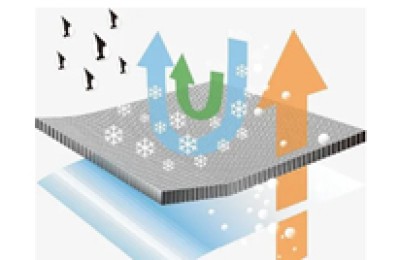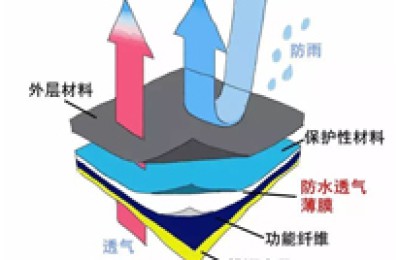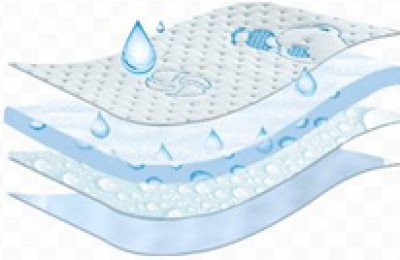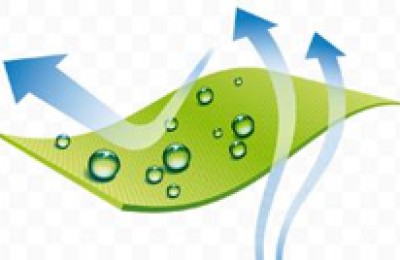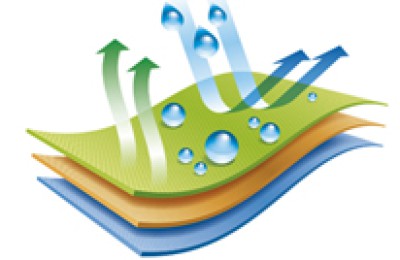Viscose fiber is a chemical fiber with a long history, mature technology and wide range of uses. It has a history of 115 years since it achieved industrial production in 1905. According to its structure and performance, it can be divided into ordinary viscose fiber, high wet modulus viscose fiber, strong viscose fiber and modified viscose fiber. According to statistics from relevant agencies, by the end of 2019, the world’s viscose fiber production was about 6.45 million tons.
Viscose fiber has experienced two development cycles from its origin, development to decline and then development again. 1900-2000 is the first cycle, and 2000 to the present is the second cycle. From the perspective of output changes, the first development cycle is mainly driven by the foreign viscose fiber industry; the second is mainly driven by the Chinese viscose fiber industry.
Any industry or product has its life cycle. The life cycle of the industry mainly includes four development stages: infancy, growth, maturity and decline. The main indicators to identify the stage of the industry life cycle are: market growth rate, product variety and number of competitors. This article mainly uses these three indicators to analyze the current development stage of the foreign and domestic viscose staple fiber industries.
The development history of viscose fiber abroad
In 1891, Americans Cross, Beavan, Beadle and others found in the laboratory that alkali-treated cellulose can react with carbon disulfide to produce cellulose xanthate, which can be dissolved in dilute alkali solution. Because of the high viscosity of this solution, it is named “viscous”. After viscose encounters acid, cellulose precipitates again. Based on this principle, a method of preparing chemical fibers was developed in 1893. The fiber produced using this method is called “viscose fiber”. By 1905, Miller and others invented a coagulation bath composed of dilute sulfuric acid and sulfate, realizing the industrial production of viscose filaments.
Viscose filament produces a certain amount of waste silk during spinning and doffing. People cut it into short fibers similar in length to cotton fibers, and then As a raw material for textile fibers, it is called man-made staple fiber or viscose staple fiber. The viscose staple fiber obtained in this case was unstable in terms of output and quality, so starting in 1920, the laboratory began to conduct systematic experiments on directly manufacturing viscose staple fiber. By around 1933, viscose short fiber products were finally available. Since then, viscose staple fiber factories have popped up around the world.
From 1900 to 1935, viscose fiber, which was in its infancy, began to develop differentially. During this period, in addition to viscose filament and viscose staple fibers that are still widely used today, there are also cuprammonium fibers, protein fibers, etc. that have emerged.
The British company Courtaulds plays an important role in the history of viscose fiber development. Courtaulds was founded in 1794. Before 1905, it focused on fabrics and clothing as its main industry. It started in August 1905. Production of viscose fiber, which has since become one of the company’s pillar industries. Courtaulds successively built factories or invested in viscose fiber in the United Kingdom, the United States, Germany, France, Italy and other countries. Until the 1970s, Courtaulds and its viscose fiber projects were in a period of vigorous development.
It can be seen from relevant historical data that from 1959 to 2019, the world’s viscose fiber generally showed a trend of origin, development, decline, and then development again, and it has experienced this twice cycle cycle. According to the output division, the development of viscose fiber can be divided into two major cycles: 1900-2000 is the first cycle, and 2000 to the present is the second cycle. In the first cycle, viscose fiber production dropped sharply around 1945. The main reason was that after the end of World War II, Germany, Italy, and Japan reduced production and then resumed production in 1946.
After the end of World War II, the industries of various countries around the world were in dire straits, and viscose fiber ushered in its first period of brilliant development at this stage. During this period, a number of outstanding viscose fiber production companies emerged in major viscose fiber production bases such as Western Europe, Eastern Europe, the former Soviet Union, the United States, and Japan. At the peak of development, there were more than 180 viscose fiber manufacturers worldwide, and around 1973, the annual production capacity reached 3.5 million tons.
At this stage, the varieties of viscose fiber were continuously enriched, and 1950-1970 was the heyday in the history of viscose cord development. From 1935 to 1950, after 15 years of technological upgrading, the viscose cord production industry has become relatively mature, and the quality is completely better than cotton cord. In places such as West Germany, France, the former Yugoslavia, and the former Soviet Union, viscose cords have basically replaced cotton cords. But after 1970, due to the rise of nylon industrial yarn, viscose cord gradually began to decline. From 1962 to 1970, people began to develop high wet modulus viscose fibers. In addition to high strength, low stretch and low expansion, the main characteristic of this fiber is high wet modulus, so it is called high wet modulus viscose fiber.
During 1991-1992, the former Yugoslavia and the former Soviet Union collapsed. After the disintegration, various countries were busy with regime changes, and viscose fiber production factories gradually shut down. This also marked the end of the glorious period of foreign viscose fiber and the beginning of the recession period.
The development history of China’s viscose fiber
The establishment of China’s chemical fiber industry It started with viscose fiber, marking the start of the restoration of the Dandong Chemical Fiber Factory. From 1956 to 1990, China’s viscose fiber factories were constructed relatively rapidly and occupied a certain position in the domestic chemical fiber industry.The intersection of the three major elements in time can be found that 1965-1973 was a period of rapid development of foreign viscose fiber production, and then entered a mature period, and entered a decline period since 1995; China’s viscose fiber industry was in 2000, especially in 2008 Since then, it has achieved unprecedented development, from an annual output of less than 1 million tons to more than 4 million tons in 2019. The similarity between the two development curves shows that the life curve of my country’s viscose fiber development peak period has also reached its peak, which means that the rapid development period of viscose fiber is about to end and the industry will enter a mature period.
In this process, new differentiated products will become increasingly abundant. For example, the production capacity of high-white viscose fiber has achieved mass production of 700,000 to 750,000 tons/year, accounting for nearly 15% of the entire viscose fiber production capacity. This also marks that high-white viscose fiber has gradually transformed from differentiated viscose fiber to differentiated viscose fiber. Viscose fiber degenerates into ordinary viscose fiber. There will be more stock competition in this industry, which may accelerate the adjustment, optimization and upgrading of the industry’s production capacity structure. In this process, the viscose fiber industry will see an increase in monomer production capacity and continuous mergers and reorganizations among enterprises, which will eventually form a collectivized and industrial chain operation form, thereby realizing the combination of advantages of each link in the industrial chain and forming a new On the other hand, there will be phenomena such as rapid changes in downstream varieties and short fashion trend cycles. In this regard, international companies such as Lenzing, DuPont, Teijin, and Asahi Kasei have gone through the last complete cycle and accumulated rich experience. Domestic companies can learn from their business concepts to meet the viscose fiber demand after this peak development period. The industry is mature. </p




